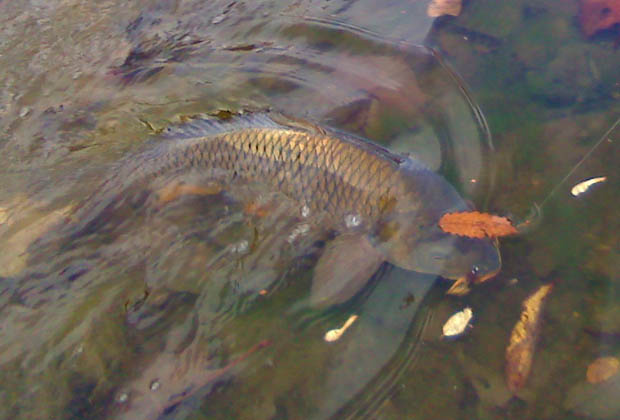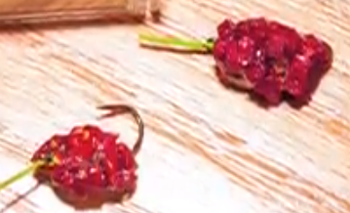
Article by Joe Cermele / Field & Stream
[dropcap]T[/dropcap]rout nuts live for the Hex hatch, which draws normally wary monster browns to the surface. Tarpon freaks wait patiently for hatching palolo worms that get 100-pound silver kings sipping like drunken chubs. For fly casters like myself who drank the carp Kool-Aid years ago, there is no bug or wiggler event that turns “golden bonefish” into carefree eating machines as much as a mulberry hatch. Found throughout much of North America, these wild berries ripen in early summer, and when the fruit drops into carp-filled water, fish that are notoriously finicky become easier to catch than at any other time of year. If you happen to be on the fence about what many say is just a fishing fad, don’t pass judgment until you’ve fished a berry fall. You’ll spend less time trying to feed fish and more time watching your backing melt away if you choose your flies and days wisely.
Sounds Delicious
Early mulberry imitations were mostly made of spun deer hair, but with the rise in carp fly fishing popularity, creative tiers have concocted fresh berries out of modern materials like foam and epoxy. Some of these flies – like Pennsylvania carp guide Nick Raftas’s Berry-U-Sucka—are so realistic, you might mistakenly drop a handful on your Wheaties. That level of realism serves a purpose. When mulberries are falling hard and working carp into a frenzy, any pattern that loosely matches them in size and shape—even a pink salmon egg—usually gets eaten. When only a berry or two is dropping here or there, carp may take more time to study the fly, in which case, closely matching each juicy dimple matters. But according to Raftas, the first criterion to consider when choosing a mulberry is audible appeal, not looks.
“A falling mulberry makes a plop when it hits the water. That noise is what triggers carp to come take a look before they even see the fly,” Raftas says. “Flies that don’t imitate that sound aren’t as productive, which is why I lean so heavily on foam.”
Raftas points out that a mulberry feed is not always a surface occurrence. Depending on how waterlogged berries get, or their density based on ripeness, these morsels will sink and collect in back eddies and areas of soft current. Carp are just as happy to root sunken berries off the bottom. Keep an eye out for mud clouds below berry trees, and when you find one, switch to a weighted berry imitation that will settle slowly into the zone. Flies that drop in too quickly can actually spook the fish. Once your pattern touches down, keep your line as taut as possible without moving the berry. If the mud is so thick that you won’t be able to see a carp suck up the fly, watch the point where your line enters the water. If it twitches or starts moving up-current, set the hook.
Continue reading and watch video on how to tie Nick Raftas’s Berry-U-Sucka . . .




